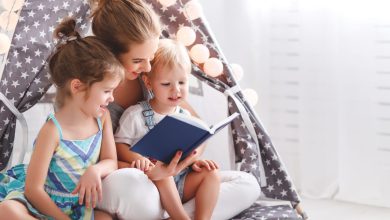How to Make Your Own Baby Food

How to Make Your Own Baby Food
Parents are more health-conscious and money-conscious than ever before. Not only are more and more studies coming out about the problems with ultra-processed food, but the cost of living for most parents has only increased. For parents with infants and babies, one of the easiest ways to address both issues is to make their own baby food. And while it may seem overwhelming at the start, making and storing your own food purees is a cinch!
Age Matters
Babies aren’t ready for solid foods until they are at least 4 months old. Depending on the child, they may need to be even older before trying something other than breastmilk or formula. Talk with your pediatrician about when it’s best to introduce solids for the first time to your child.
Age also matters when it comes to the types of foods you feed your child.
- 4 to 6 months – 1 to 2 tablespoons of a single-ingredient, veggie- or fruit-based purees. This will make it easier on their young digestive systems and help you identify any food sensitivities or allergies. (More on that below.)
- 7 to 9 months – The earliest ages you would want to introduce two-ingredient foods, meats, and other proteins.
- 9 to 12 months – The age at which it’s safe to introduce chunkier purées, mashes, and dairy.
Don’t be afraid to take it slow. If your child seems to be struggling with solids or doesn’t enjoy a particular food, take a step back and talk with your doctor if you need extra support.
Equipment
Making baby food isn’t hard, but you will need a few things to get started.
- Blender or Food Processor – A high-quality blender or food processor is essential for pureeing fruits, vegetables, and other ingredients.
- Steamer or Pot with Steamer Basket – Steaming is a popular cooking method for preserving nutrients in baby food. A steamer or a pot with a steamer basket can be used to steam vegetables, fruits, and other ingredients.
- Storage Containers – Parents will need a supply of airtight containers (see below) for storing and freezing baby food.
- Cutting Board & Knife – A good-quality cutting board and a sharp knife are handy for chopping fruits, vegetables, and other ingredients.
Ingredients
- Fruits – Opt for ripe, soft fruits such as bananas, avocados, peaches, pears, and apples. These can be pureed easily and are gentle on the baby’s palate.
- Vegetables – Choose nutrient-rich vegetables like sweet potatoes, carrots, peas, spinach, butternut squash, and broccoli. Steam or roast them before pureeing.
- Whole Grains – Introduce whole grains like brown rice, quinoa, oats, and barley. Cook them thoroughly and blend with fruits or vegetables for added nutrition.
- Proteins – As your baby grows, you can incorporate protein-rich ingredients like lentils, chicken, turkey, or tofu. Ensure they are cooked and pureed to a suitable consistency.
- Healthy Fats – Avocado, olive oil, and coconut oil are great sources of healthy fats that support brain development. Add small amounts to baby food for added nutrition.
- Herbs & Spices – As your baby gets accustomed to different flavors, you can introduce mild herbs and spices like cinnamon, ginger, basil, or dill. Start with small amounts and observe how your baby reacts.
How to Store Your Baby Food
Storing homemade baby food properly is crucial to maintain its freshness, nutritional value, and safety. Here are some good ways to store baby food:
- Airtight Containers – Glass or BPA-free plastic containers with lids are commonly used for storing baby food. Choose containers that have airtight seals to prevent air exposure and preserve freshness.
- Silicone Freezer Trays – These trays come with individual compartments and lids, making it easy to freeze and store small portions of baby food. They are often stackable to save space in the freezer. You can also use ice cube trays, but you’ll want to transfer the frozen baby food blocks into bags to avoid contamination with other things in the freezer.
- Freezer or Breast Milk Storage Bags – Freezer-safe, zip-top bags or breast milk storage bags are an alternative to containers and ice cube trays. Portion the baby food into individual servings, remove as much air as possible, seal tightly, and lay flat to freeze. Label the bags with the date and food type for easy identification.
- Squeeze Pouches – Companies sell special equipment that allow you to put your homemade baby food into easy-to-carry pouches. It’s an added expense, though, and certainly not a requirement for making your own baby food.
When storing your baby food, keep these things in mind.
- Label your containers with the date and type of food inside to keep track of freshness.
- Use frozen baby food within one to three months.
- Thaw frozen baby food in the refrigerator overnight or defrost it using a microwave or warm water bath. Check the temperature before serving it to your child to make sure it’s at a “Goldilocks” temperature. (Not too hot, not too cold.)
- Never refreeze thawed baby food. Throw away leftover baby food that has been in contact with your baby’s utensils to prevent contamination.
A Quick Word on Allergies
If you are introducing foods to your infant for the first time, be sure to look out for allergic reactions or signs that your child is intolerant to a certain kind of food. When introducing a potentially problematic food to your child for the first time, make it the only thing on the menu. That way, you’ll know for sure which food or ingredient is the problem if your child has a reaction.
Both the American Academy of Pediatrics and Byram Healthcare have excellent information for parents on what food groups are most likely to cause a reaction and what to do if your child has one. And of course, consult with your pediatrician before introducing new foods if there are any concerns or known allergies.
Pace Yourself
Making your own baby food should enhance your life, not be an additional stressor. If making a giant menu of options for your baby seems overwhelming, start with one or two recipes you know you can handle and scale from there. And don’t feel pressured to buy lots of fancy kitchen gadgets. What you have already in your cabinets will most likely do. Again, making your own baby food and following simple puree recipes will be enough to both enhance your child’s nutrition and lessen the strain on your bank account.





